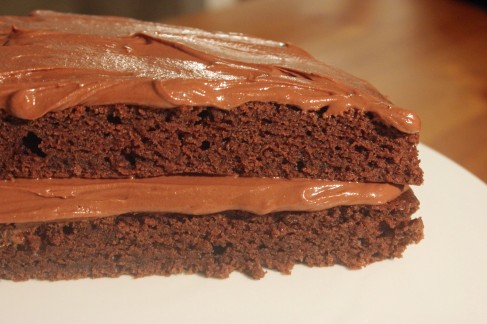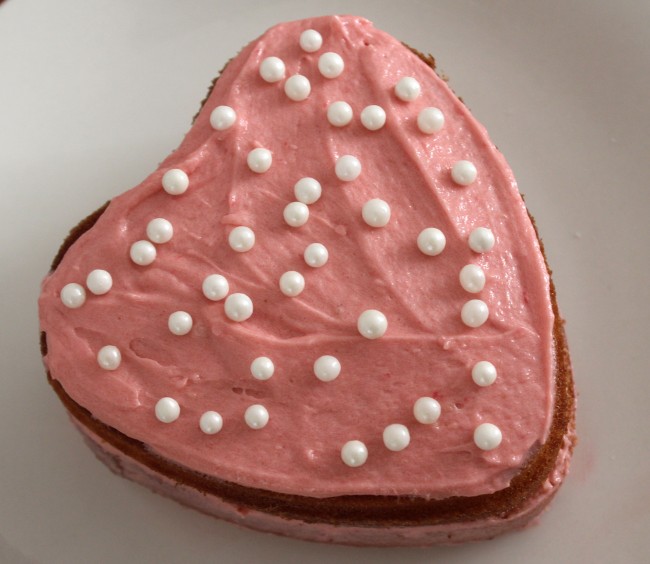
The timing for this post couldn’t be better – I needed to move on to foam-based sponges and it was Australia Day so what better cake to do than a lamington!
You can use any sponge base for a lamington, so I wanted to try out the much feared Genoise.
Genoise is named after its place of origin, Genoa in Italy. It differs from other foam-based cakes because it uses whole eggs to beat with sugar rather than just egg whites.
The eggs and sugar are beaten until they have “ribbon” consistency before flour is sifted, then gently folded into the mix. A small amount of melted butter is added at the end for flavour.
There seem to be two ways to make a Genoise – one which involved whisking the eggs and sugar in a bowl over a pan of simmering water to thicken the mixture. I decided to keep it simple and go without the extra step, but will try it in future posts.
I won’t lie and tell you my first Genoise experience was easy. In fact, I questioned myself throughout the whole process and still am not sure if I got it right.
There are a few places you can fall over. Firstly, you have to make sure you don’t over- or under-beat the eggs – too little won’t give the cake any rise, and too much will create large air bubbles that will pop in the often and give you a flat, dense cake.
Secondly, you need to make sure you don’t lose the air bubbles when you fold in the flour. Tips include sifting from a height, then using a spatula to gently fold in the flour.
It’s quite distressing because you can actually hear the bubbles pop as you stir and know that every pop is a slightly less fluffy sponge.
Lastly, make sure the butter has been melted and is then left to go back to room temperature. Otherwise, you’ll be mixing hot liquid into cold eggs so could get some scrambling.
Lamingtons themselves aren’t hard to make, but can be quite messy. You can make them in any shape you want – as a full cake (filled with jam and cream), as squares or as fingers like I have here.
There’s a lot of talk about using forks to dip your sponge into the chocolate mixture, but I find hands are the best way to go.
Also, try to leave you cake out for a few hours or overnight before dipping and coating. This can help stop the cake from crumbling.

Genoise sponge lamington fingers (Genoise courtesy of Michel Roux)
20g butter, softened, to grease
125g plain flour, sifted
4 eggs, room temperature
125g caster sugar
30g butter, melted and cooled to tepid
2 cups desiccated coconut
3 ½ cups icing sugar
2 tbsp cocoa powder
1 tbsp butter, melted
½ cup boiling water
Preheat the oven to 190 degrees. Butter and lightly flour a sheet pan.
Whisk the eggs and sugar together in a bowl for about 12 minutes, until the mixture leaves a ribbon trail when you lift the whisk.
Shower in the flour and delicately fold it into the mixture.
Add the melted butter and fold in carefully, without overworking the mixture.
Pour the mixture into the prepared tin and bake for 15 minutes or until springy to the touch and a golden colour.
Turn the cake out onto a wire rack, cover with a tea towel and leave overnight.
The next day, mix together the icing sugar, cocoa, butter and water.
Cut the cake into fingers, then dredge in the icing and then coat with coconut.
Leave for two hours, then serve.
Happy Australia Day!! 🙂




